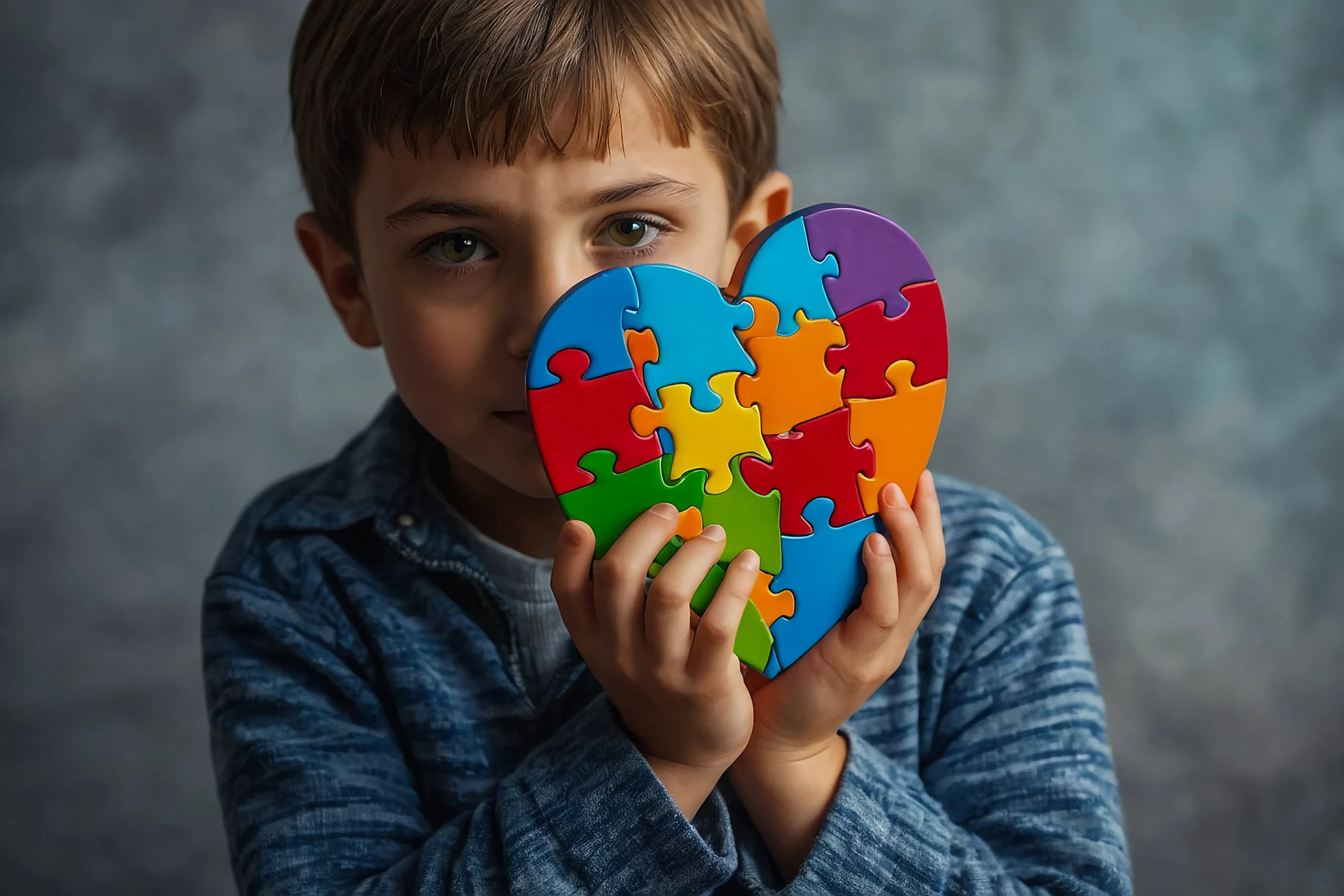You have already observed how your cheerful eight-year-old breaks down on his birthday, putting his ears under his hands when it’s time to sing. The student who scores high on tests struggles when there is no particular structure to the assignment. The talented worker who knows how to reach solutions to difficult thinking problems.
Those are not exceptions but are the vision of neurodiversity, a natural spectrum of human thinking which influences around 15-20% of the world population. It is necessary to realise that it is not about tags, it is about harnessing potential both at home and classroom levels. The guide can provide evidence-based methods to identify strengths, offer deep and meaningful support, and create an actual environment where neurodiverse minds will flourish.

So, What is neurodiversity? It is like constructing a city with just a rough plan. Neurodiversity acknowledges that, just as our hands are different, human brains naturally evolve in different ways – as seen in autism, ADHD, dyslexia, and Tourette syndrome, to name a few – to provide us with a universal resilience.
According to research conducted at Cambridge University, neurodivergent teams resolve complex tasks 30% faster when utilizing cognitive diversity. However, 7 out of 10 autistic adults agree that teachers do not understand them, which results in mental health crises in autistic adults that are preventable. Neurodiversity is important to understand because it:
Many different conditions fall under the heading of neurodiversity, which come with their personality traits and associated issues. The most common forms of neurodivergence are:
ASD (Autism Spectrum Disorder): A lifelong developmental condition that impairs a person?s ability to communicate and relate to other people.
ADHD (Attention Deficit Hyperactivity Disorder): A disorder that affects attention, impulse control and hyperactivity.
Dyslexia: A learning disability that can impact reading, spelling and writing.
Dyspraxia: A developmental coordination disorder that impairs physical coordination and motor skills.


Affects 6% of children, including those with motor coordination issues. Studies indicate that most will acquire outstanding verbal creativity and tactical problem-solving as income.

ASD is a condition that affects 1 in 36 children and is characterized by distinctive communication modalities, sensory difficulties, and intense interests. According to research, autistic brains are more effective in the local association of neural connections, thus illustrating their outstanding attention to detail. Pattern recognition (essential to data science) and arcane knowledge are included among the strengths.

It affects 9.4% of children and is characterized by fluctuating levels of attention management, as well as hyperfocus. Research at the University of Michigan has shown that individuals with ADHD generate three times the number of business ideas. The strengths are crisis management and associative thinking.

It is characterized by a 20% worldwide majority, which entails difficulty in language processing. Yale neuroscientists have discovered that individuals with dyslexia can perceive spatial relationships in half the time, which may be why entrepreneurs are dyslexic.

Neurodiversity does not only occur during childhood. Adults live in a world where they understand that they share aspects of adult neurodivergence. The signs of neurodivergence in adults are, they might believe they would not fit the group or in the events, are not organized, have sensory problems, feel swamped during social interaction, or are obsessed with concentrated topics and even find routine jobs boring and sometimes infinitely boring.
It is vital to note that these symptoms of neurodivergence may be an enormous relief to the persons affected since they can learn more about themselves, find their voices and request support measures or defenses, finally making them operate more efficiently in their lives.
Important Data: Anxiety/depression is 3-fold higher than usual in late-diagnosed women before discovery. Diagnostic validation eliminates self-blame. Dr. Elena Martinez states, a therapist: “When clients realize that their sensory overload is not a sign of weakness but a neurological difference, they finally cease to refer to themselves as being lazy.”
is neurodiversity a disability It varies individually. Yes, it is legally correct because the ADA shields neurodivergent people. Most frequently, disability develops as a result of environmental mismatches:
It is not a disability but an incompatibility between a person and their environment. Procedures such as using noise-canceling headphones or extending deadlines are neurological prosthetics rather than advantages. According to advocate, the idea of asking her to work under fluorescents is as close as asking a wheelchair user to climb stairs.

Creating awareness is important particularly among the developed societies. Events that raise awareness, such as Neurodiversity Awareness Month (most usually held in October) serve as a discussion place and inform people. These associations include the association for autism and neurodiversity, which provide a contact point and offer support and resources and act as an advocate.
The observance of Neurodiversity Awareness Month can change the way people think. Empowering individuals and families through organizations such as the Association of Autism and Neurodiversity would promote policy change and enhance acceptance in schools, organizations, and society. Neurodivergent individuals are afforded equality, and their rights are protected through advocacy.
In the past, patients with disorders such as autism and ADHD were diagnosed using diagnostic criteria, mainly considering male conditions. It resulted in the lack of diagnosis of neurodivergent in women and girls or misdiagnosis. In women, neurodivergent usually manifests in different ways.
Key features can include severe masking (muffling natural characteristics to fit in), social mimicry, internalized hyperactivity, and special interests being presented as more socially palatable, as well as hypersensitivities associated with the senses. To gain a sense of neurodivergence in females, one must step outside and leave behind the stereotype.
It is another important condition that one must understand the peculiarities of trait presentation in neurotypical and neurodivergent individuals, especially regarding their genders. The difference in what neurotypicals experience of neurodiversity is primarily in girls and women, and this further emphasizes the need to create awareness about this condition and gender-sensitive testing.
A beginning point is self-reflection. When you lived longer, what have you experienced: sensory sensitivities (sounds, lights, textures), social situations (feeling drained, misinterpreting signals), being highly passionate, being organized, learning, or just having a feeling of being different? Investigating particular forms of neurodiversity may seem familiar. Self-evaluation on the internet (such as the RAADS-R or ASRS) provides a preliminary diagnosis. Still, only a professional assessment (from an experienced adult diagnostician) can confirm such a diagnosis. Hear from other neurodivergent people.
Look for patterns within the environments. The most known indicators might be the language delays, abnormal language patterns, or the massive fascination with some particular fields, repetitive behavior (stimming), sensitive ears, or touch (putting fingers into ears or wearing no different fabric), awareness in social play or having friends, literal use of speech, or having issues in transition and having good memory or memorize specific skills or severe emotional issues.
Neurotypical refers to neurological development that is reflective of advanced societal norms. Neurodivergent is used to denote variations (ASD, ADHD, etc.) that have other cognitive capacities. The neurotypical-neurodivergent distinction does not imply better or worse but rather different processing systems that require varied support.
Unmasking involves involuntarily or voluntarily the process in which a person with autism no longer masks or represses their innate autistic behavioral traits to seem less autistic. This masking is tiresome and can cause burn-up and loss of identity. Unmasking means letting oneself be stimulated without limits, being able to communicate honestly (with less use of eye contact or direct language), acting on things that genuinely interest them, and setting boundaries in terms of senses. It is a process of self-acceptance and authenticity in living that minimizes the cognitive and emotional burden of ongoing performance.
https://my.clevelandclinic.org/health/symptoms/23154-neurodivergent#:~:text=Is%20it%20possible%20to%20prevent,not%20preventable%2C%20treatable%20or%20curable.https://lexxic.com/
resources/neurodiversityhttps://paradigmtreatment.com/signs-of-neurodivergence/
Subscribe to our regular newsletter updates and stay educated!